
Finance
How to Finance your Bathroom Remodel in Chicago
04.15.2025
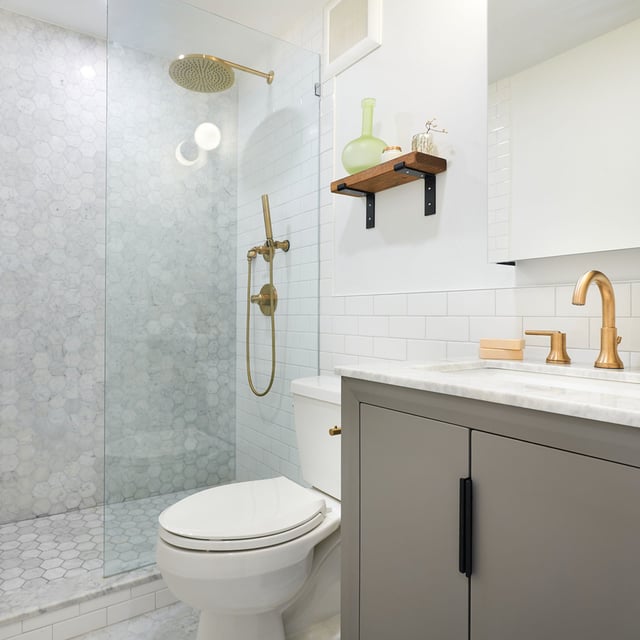
In This Article
Building a bathroom in your basement can be a game-changer for your home, adding both value and convenience. Imagine having an extra restroom to ease morning traffic jams or serve guests during gatherings.
However, taking on a basement bathroom project isn’t without its unique challenges, such as dealing with plumbing issues and space limitations.
In this guide, we'll walk you through the process step-by-step, from planning and construction to the final finishing touches, ensuring your project is a success.
Before diving into your basement bathroom project, it's crucial to assess the feasibility and plan carefully. This involves understanding the available space, potential obstacles, and local building regulations. Proper planning sets the foundation for a smooth and successful renovation journey.
When considering building a bathroom in your basement, the first step is to evaluate the available space - is it going to be a small bathroom or a big one? Make sure there's enough room for the essential elements like a toilet, sink, and shower or tub. A well-planned layout ensures that the bathroom is not only functional but also comfortable to use.
Next, it's important to identify any structural obstacles that might be in the way. Look for things like support beams or existing plumbing lines that could complicate the construction. Being aware of these factors early on helps avoid unexpected challenges later in the renovation process.
Lastly, think about how the new bathroom will fit into the overall flow of your basement. Consider the location in relation to other areas, such as a laundry room or guest room. Proper placement can make your basement bathroom a convenient and seamless addition to your home.
Understanding and complying with local building codes and permits is a crucial part of your basement bathroom project. Before you begin any construction, it's essential to research the specific regulations in your area to ensure everything is up to code. Adhering to these rules not only ensures safety but also helps avoid potential fines or legal issues.
To get started, follow these steps to obtain necessary permits and schedule inspections:
By taking these steps, you'll be on your way to a legally compliant and safe basement bathroom.
Determining the plumbing requirements for a basement bathroom can be more challenging than for bathrooms on higher levels. Gravity plays a crucial role in plumbing, and when adding fixtures below the main sewer line, you'll likely need a sewage ejector pump. This pump helps move waste uphill to reach your home's existing drainage system, ensuring everything flows smoothly. Additionally, proper drainage planning is essential to prevent any potential water hazards.
When deciding on the type of toilet system, consider both a macerating toilet system and traditional plumbing. A macerating toilet can be a simpler solution, as it grinds waste into a slurry and pumps it through small pipes, reducing excavation needs. Traditional plumbing, while potentially more labor-intensive and involving floor excavation, provides a permanent and robust solution if planned correctly. Weigh the costs and complexity of each option to choose the best fit for your needs and budget.
Equipping yourself with the right tools and materials is key to successfully building your basement bathroom. Before you start, it's important to gather everything you'll need to avoid unnecessary delays. The right preparation ensures that your project runs smoothly from start to finish.
To tackle your basement bathroom project with confidence, you'll need a set of essential tools at your disposal. These tools will help you measure, cut, fit, and seal all the necessary components as you work through different stages of construction. Let's break down the key tools you'll need:
Gathering the right materials is just as important as having the right tools when building your basement bathroom. These materials will form the backbone of your project, ensuring that everything is functional, sturdy, and long-lasting. Here's a list of the essential materials you'll need:
Starting with the rough-in plumbing installation is a fundamental step in creating your basement bathroom. This phase involves setting up the main framework for your plumbing system. By carefully planning and executing this stage, you lay the groundwork for a smooth and efficient bathroom construction.
Planning the plumbing layout is crucial to ensure that all your fixtures work efficiently and without any hitches. Start by carefully marking where each fixture—like the toilet, sink, and shower—will be placed. Use a measuring tape to define and measure the pipe runs, ensuring that each is straight and has the correct slope for proper drainage. Having a clear, detailed plan helps prevent future issues with water flow and ensures everything fits neatly into the available space.
When it comes to drain placement, accuracy is key. Position the toilet drain directly beneath where the toilet will sit, typically about 12 inches from the finished wall. For the sink and shower, make sure the drains align with your plumbing plan to reduce the need for additional joints or rerouting pipes. This careful preparation allows for seamless installation later on and contributes to an efficiently functioning bathroom in the long run.
Excavating the floor may be necessary if your basement bathroom requires new pipes to be laid below the existing slab. Begin by marking the areas you need to access with chalk or tape. Use a circular or reciprocating saw to cut along these lines, making sure to wear safety goggles and gloves. After cutting, use a sledgehammer to break the concrete into manageable pieces, ready for removal.
When handling concrete, safety should be your top priority. Keep your work area well-ventilated to avoid dust buildup, and use a dust mask to protect your lungs. Once the concrete is broken, carefully scoop it out with a shovel or similar tool, and place it into heavy-duty trash bags for disposal. Taking these precautions ensures a safe excavation process and prepares the area for the installation of new pipes.
Installing drain and vent pipes is a key step in setting up your bathroom's plumbing system. Start by laying the drain pipes according to your layout plan, ensuring they have the correct downward slope for efficient drainage. Connect each pipe securely, using PVC cement to join fittings. Next, link your new pipe system to the existing sewer lines, making sure all connections are tight to avoid leaks and backflow.
Venting plays a crucial role in maintaining a healthy and efficient plumbing system. Properly vented pipes allow air to flow into the drainage system, preventing suction that can slow drainage and cause unpleasant odors. To install the vent pipes, connect them to the main drain line and extend them vertically to tie into the existing vent system or create a new route through the roof or side of the house. This step ensures that your bathroom operates smoothly without issues related to poor ventilation.
A sewage ejector pump is essential when your basement bathroom sits below the main sewer line. This pump lifts waste and wastewater from the lower level up to the height where it can join the rest of your home’s plumbing system. Using it prevents sewage from backing up into your basement, ensuring efficient waste removal and sanitation. It's necessary whenever gravity alone can't move waste to the main sewer line.
To install the sewage ejector system, place the pump inside a sealed basin beneath the basement floor, adjacent to your bathroom area. Connect the pump to the sewage pipes from your toilet, sink, and shower. Next, attach the discharge line that will carry the waste to the main sewer line. Ensure all connections are secure to prevent leaks. Finally, plug in the pump to an electrical outlet, testing its operation to confirm it moves waste efficiently out of your basement.
Once the plumbing is in place, it's time to focus on the electrical and HVAC installation for your basement bathroom. These installations bring both power and comfort to your new space. Ensuring these systems are correctly installed is crucial for a safe and functional bathroom environment.
Installing electrical wiring in your basement bathroom involves setting up outlets, lighting, and an exhaust fan, all while ensuring compliance with local electrical codes. Begin by mapping out where each outlet and light fixture will go, considering how they'll fit into your bathroom layout. Use wire connectors and junction boxes to organize and securely fasten the wires, taking care to follow code requirements for bathroom installations.
When working with electricity, especially in damp spaces like bathrooms, safety is paramount. Always turn off power at the circuit breaker before beginning any electrical work. Use ground fault circuit interrupter (GFCI) outlets to prevent electrical shocks in wet areas. Furthermore, ensure all wiring is well-insulated and properly secured to prevent exposure to moisture, providing a safe and secure electrical system in your basement bathroom.
Integrating an effective HVAC or ventilation system in your basement bathroom is essential to prevent mold and humidity build-up. You have several options, such as extending your home's existing HVAC system to cover the new bathroom, or installing standalone dehumidifiers or ventilation systems. Proper ventilation helps maintain a fresh, comfortable environment and protects your investment from moisture-related damage.
For specific ventilation, installing an exhaust fan is highly recommended. Choose a fan that is appropriately sized for the room to ensure efficient air circulation. Install it close to the shower or other moisture-prone areas to quickly remove damp air. Ensure the exhaust fan vents outside your home, not just into another interior space, to effectively reduce humidity levels in your basement bathroom.
With plumbing and electrical systems in place, the next step is framing and waterproofing your basement bathroom. These elements provide both structure and protection against water damage, ensuring your bathroom is durable and long-lasting. By carefully executing these steps, you create a solid foundation for finishing touches and a beautiful final result.
Framing the bathroom walls is a vital step where you build the skeleton of your space, allowing you to incorporate both plumbing and electrical elements seamlessly. Begin by constructing the frame with wooden studs, ensuring you leave enough spacing to accommodate pipes, electrical wires, and other fixtures. Proper spacing and alignment are crucial for avoiding any interference with infrastructure during installation.
To maintain a comfortable temperature in your basement bathroom, it’s important to add insulation within the wall frames. Use moisture-resistant insulation materials to protect against basement humidity and keep the bathroom cozy. This added layer not only helps with temperature regulation but also enhances soundproofing, making your basement bathroom a more pleasant and private space.
Applying waterproofing measures is essential for preventing water damage and ensuring the longevity of your basement bathroom. Start by treating all walls and floors with a high-quality waterproof sealant, focusing on areas around the shower or tub where water exposure is most frequent. Using sealant not only protects your surfaces but also adds an extra layer of defense against moisture infiltration.
For added protection, consider installing waterproof panels or membranes. These are especially useful for shower walls, as they provide a robust barrier against water. When installing, ensure panels overlap slightly and seal joints with waterproof tape or caulk to maintain an uninterrupted protective layer. By taking these steps, you help safeguard your basement bathroom from potential water-related issues.
With the foundational work complete, it's time to focus on installing fixtures and finishing the plumbing in your basement bathroom. This stage brings your bathroom to life, making it functional and ready for everyday use. By carefully installing each fixture, you'll ensure everything operates smoothly and without leaks.
Installing the shower or tub is an exciting step that transforms your basement space into a functional bathroom. Here’s a step-by-step guide to help you secure the shower base or tub and connect the water supply:
Once the base or tub is securely installed, proceed with connecting the water supply:
Setting up the toilet and sink in your basement bathroom requires careful attention to placement and connections. Begin by positioning the toilet directly over the drain flange, ensuring it aligns perfectly for a secure fit. Use bolts to anchor the toilet to the floor, and attach the water supply line to the fill valve. Similarly, place the sink and vanity against the wall, connecting the sink drain to the plumbing and ensuring the water lines fit snugly into the faucet.
To avoid future leaks, it's essential to seal and secure everything properly. For the toilet, apply a wax ring seal around the drain flange before positioning the toilet, which acts as a barrier against leaks. Tighten the bolts evenly to keep the toilet stable and prevent rocking. For the sink, use plumber’s tape on the pipe connections and seal any gaps between the sink and the wall or vanity with silicone caulk. These steps ensure a tight, leak-free installation, contributing to a reliable and long-lasting bathroom setup.
Testing your plumbing connections is a crucial step to ensure everything functions smoothly in your basement bathroom. Begin by slowly turning on the water supply at the main valve to pressurize the system. Check each fixture by running water through the faucets, shower, and flushing the toilet, keeping an eye out for any signs of leaks around the connections or fittings.
If you encounter any leaks during your testing, don't worry. Common troubleshooting steps include tightening loose fittings or applying additional plumber's tape to seal gaps around threaded connections. For persistent leaks, you might need to replace worn-out washers or ensure that the pipes are correctly aligned and connected. By addressing these issues promptly, you ensure a fully functional and reliable plumbing system.
With fixtures and plumbing successfully installed, it's time to move on to finishing your basement bathroom with drywall, flooring, and painting. These tasks will bring a polished and inviting feel to your new space. By choosing the right materials and techniques, you can create a durable and aesthetically pleasing bathroom that complements the rest of your home.
Hanging and finishing drywall is an important step in creating sturdy walls for your basement bathroom. Begin by measuring the wall areas and cutting the drywall sheets to fit, using a utility knife for precise edges. Hang the sheets on the wall frames, securing them with drywall screws; be sure to keep screws evenly spaced for maximum support.
For a basement bathroom, it's wise to use moisture-resistant drywall, often referred to as greenboard, to protect against dampness and potential mold growth. Once the drywall is in place, apply joint compound over the seams and screws, then smooth it out with a drywall knife. Allow the compound to dry before sanding it to a smooth finish, preparing the surface for painting or further finishing touches.
Choosing the right flooring for your basement bathroom is crucial for durability and style. Opt for basement-friendly materials like vinyl or tile, as these options are waterproof and resistant to the damp environment often found in basements. Both options provide a range of styles and colors, allowing you to customize the look of your bathroom.
Here are the installation steps for achieving a waterproof and durable finish:
Painting your basement bathroom not only adds color but also provides protection against moisture. Choose a high-quality, moisture-resistant paint designed for bathrooms, as it will help prevent issues like mold and mildew over time. When selecting a color, consider shades that complement your fixtures and create a bright, inviting atmosphere in what can often be a dim area of the home. Apply a primer first to ensure that the paint adheres well, then follow with two coats of your chosen paint for a smooth, durable finish.
After painting, focus on the final touches to enhance your bathroom’s aesthetic and complete the look. Adding trim around windows, doors, and baseboards can provide a polished edge and help tie the room together. Consider installing decorative elements like towel racks, mirrors, and stylish lighting fixtures that match your bathroom’s theme. These finishing details not only amplify the room's decor but also add functionality and character to your new basement bathroom.
Deciding whether to tackle your basement bathroom as a DIY project or hire a professional is a significant choice. This decision depends on your comfort with renovation tasks and the complexity of the construction involved. Understanding the benefits and drawbacks of each option will help you determine the best path for your project.
Hiring a professional is often the best option for large-scale projects or when complex plumbing needs arise. Professionals have the expertise to handle intricate systems smoothly, ensuring that everything is installed correctly and efficiently. If your basement bathroom requires significant structural changes or advanced plumbing solutions, such as a sewage ejector system, a professional can manage these tasks effectively, reducing the risk of mistakes and costly rework.
Another scenario where hiring a professional is advisable is when you have little or no experience with electrical or HVAC installations. These elements can be very technical, and improper handling can lead to serious safety issues. Additionally, professionals are well-versed in local building codes and regulations, ensuring full compliance and passing inspections. If your area has strict building codes, having an expert who understands these requirements can save you time, stress, and potential legal issues.
Finding the right contractor for your basement bathroom project is essential to ensure quality workmanship and a smooth construction process. A well-chosen contractor can bring your vision to life, making the renovation experience pleasant and stress-free. By carefully researching and selecting a qualified professional, you can feel confident in your project's outcome.
Researching contractors begins with gathering recommendations from trusted sources, such as friends and family who have completed similar projects. Online reviews are also a valuable resource, as they provide insights into a contractor's reputation and reliability. Look for contractors who consistently receive positive feedback and have experience specifically with basement renovations. This approach helps you narrow down your options to a list of potential candidates who have proven their capability and customer satisfaction.
Once you have a shortlist of potential contractors, it's crucial to verify their credentials, licenses, and insurance. A qualified contractor should hold all necessary licenses for your area, demonstrating they meet local requirements and standards. Additionally, ensure they have adequate insurance coverage to protect against any accidents or damages during the project. This step not only safeguards your home but also provides peace of mind knowing the contractor is professional and trustworthy.
Requesting multiple estimates is a smart way to compare pricing and ensure you're getting a fair deal for your basement bathroom project. To start, contact several contractors from your shortlist and provide them with a detailed description of your project needs, including materials and timeline expectations. This information helps contractors prepare accurate quotes, allowing you to evaluate the different offerings side by side.
When comparing quotes, pay attention to what each estimate includes. Look beyond just the total cost – consider whether the quote covers labor, materials, permits, and any potential contingencies. Ensure you understand each component's pricing and look for any hidden fees or exclusions that might affect the final cost. By thoroughly analyzing the content of each quote, you can make an informed decision and select a contractor that offers the best value for your renovation needs.
During the interview process, it's essential to ask key questions to assess each contractor's skills and experience. Inquire about their experience with similar projects, particularly those involving basement renovations, to ensure they have the specific expertise needed for your job. Ask about their timeline for completion, availability of their crew, and how they handle unexpected challenges during the construction process. This information will give you a clear picture of their capabilities and reliability.
Additionally, ensure the contractor is familiar with basement-specific challenges such as moisture control, insulation, and plumbing. Discuss any particular concerns you have about your space, and gauge their confidence in addressing these issues. Their ability to provide detailed solutions or suggestions will demonstrate their understanding and preparedness for the complexities of a basement bathroom renovation.
Checking a contractor's references and past work is crucial for verifying their quality and reliability. Ask the contractor for a list of previous clients who can share their experiences, focusing on those projects similar to yours. Speaking directly with past clients allows you to get firsthand feedback on the contractor's professionalism, adherence to timelines, and satisfaction with the final outcome.
When reviewing past work, be attentive to any red flags such as unfinished projects, frequent complaints about delays, or cost overruns. Dishonesty or difficulty in communication noted in reviews can also be warning signs. Ensuring thorough checks will help you choose a contractor with a proven track record of successful projects and satisfied clients.
Scheduling final inspections is a crucial step to ensure your basement bathroom complies with all local building codes. To schedule, contact your local building authority well in advance to arrange a convenient time for the inspection. Ensure that all work is completed before the inspector arrives to avoid delays or re-inspections.
A final checklist can help confirm that all elements meet code requirements:
Cleaning up the workspace is important for safety and aesthetics. Here are a few tips for a thorough clean-up:
Building a basement bathroom is indeed a manageable project with the right preparation and planning, allowing you to add both functionality and value to your home. As you enjoy your new space, remember that regular maintenance will ensure it continues to serve your needs effectively for years to come. By taking the time to care for your new bathroom, you can enjoy its benefits worry-free.
How do I know if my basement plumbing is compatible with adding a bathroom?
What is the best way to handle moisture and prevent mold in a basement bathroom?
Can I install a basement bathroom without breaking the concrete floor?
What type of ventilation system is required for a basement bathroom?
How long does it typically take to complete a basement bathroom project?
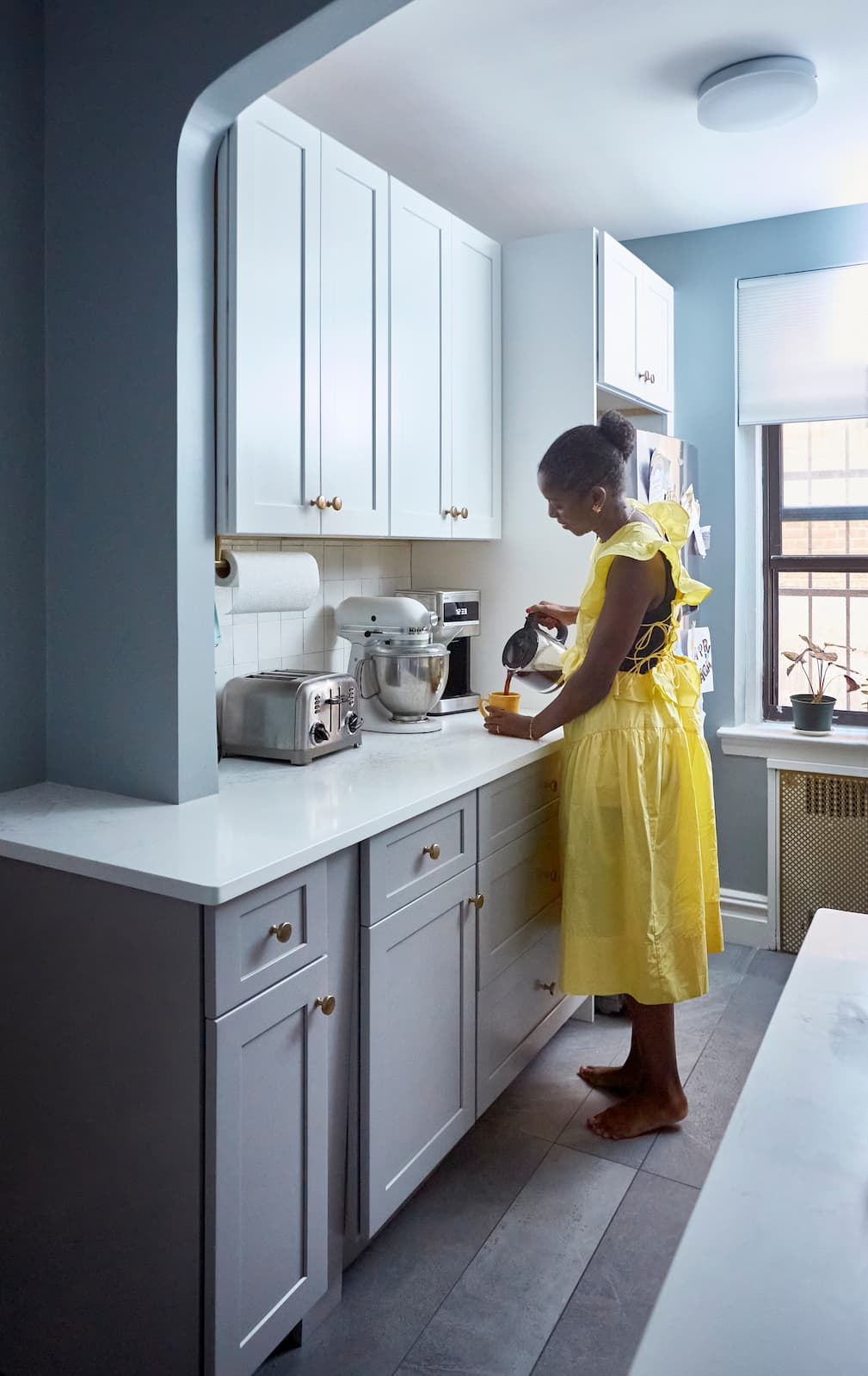
Renovate confidently with Block
Easily compare quotes from top quality contractors, and get peace of mind with warranty & price protections.
Thousands of homeowners have renovated with Block

4.5 Stars (100+)

4.7 Stars (100+)

4.5 Stars (75+)

Finance
How to Finance your Bathroom Remodel in Chicago
04.15.2025

Design
What is a Frameless Glass Shower Screen?
03.25.2025
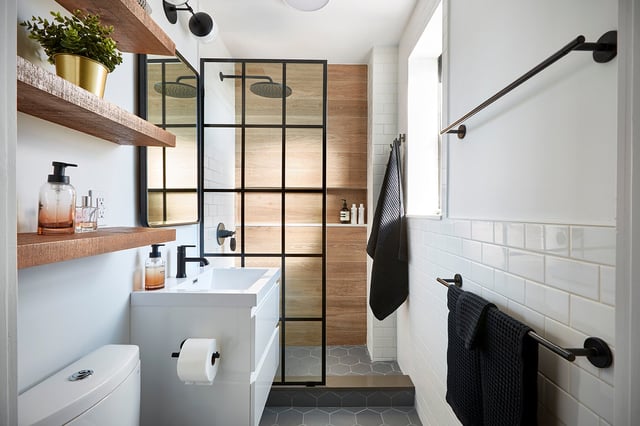
Finance
Ultimate Guide to Chicago Bathroom Financing
03.24.2025
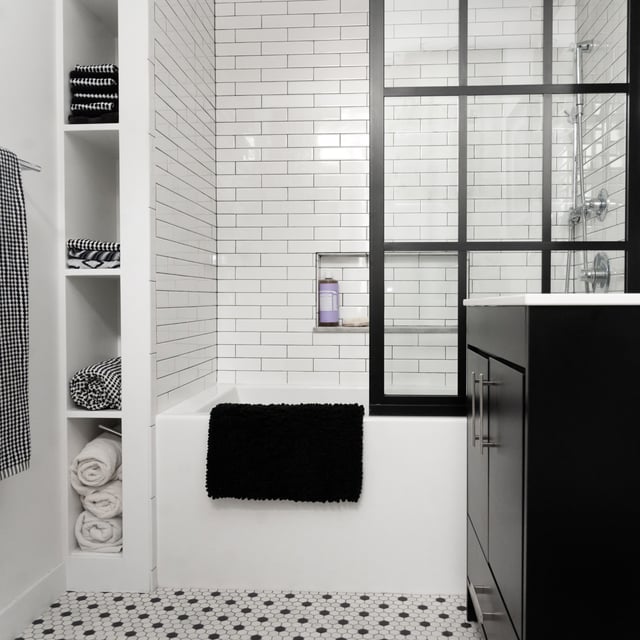
Remodeling
How to Finance a Bathroom Remodel in New Jersey
03.19.2025
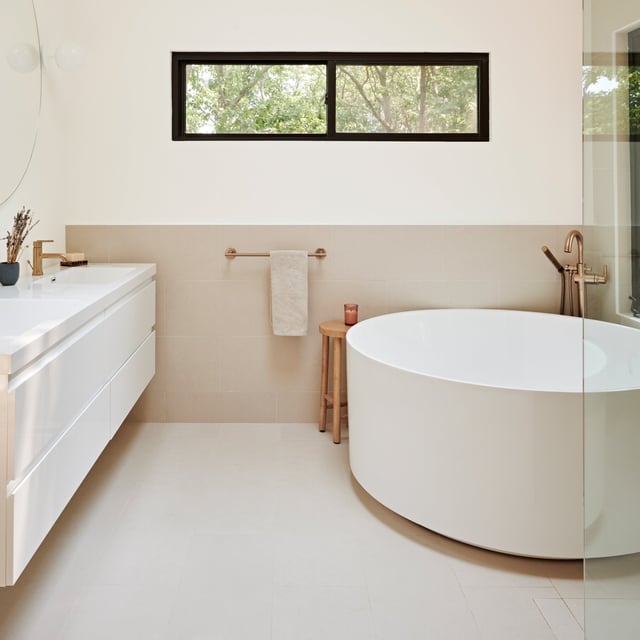
Cost
A Complete Guide to Bathroom Renovation Costs in Fairfield County (2025)
03.19.2025
Renovate confidently